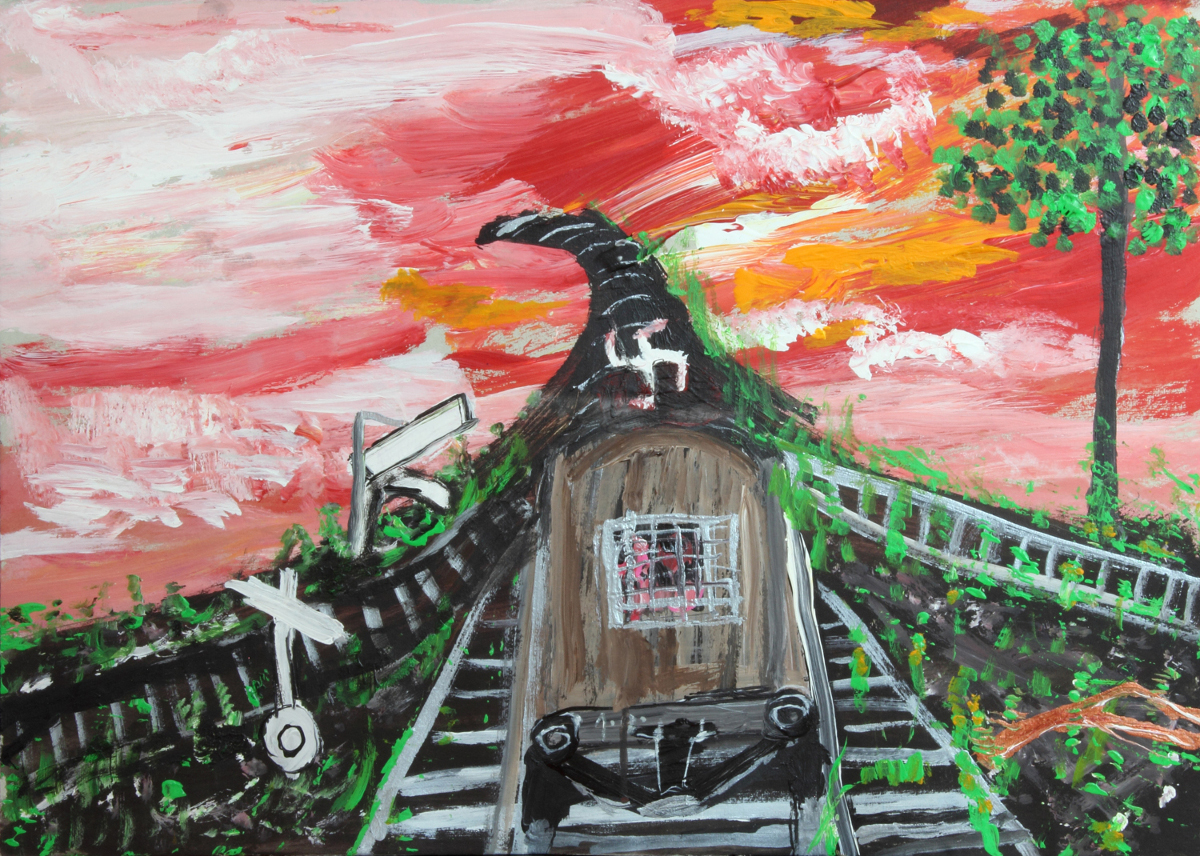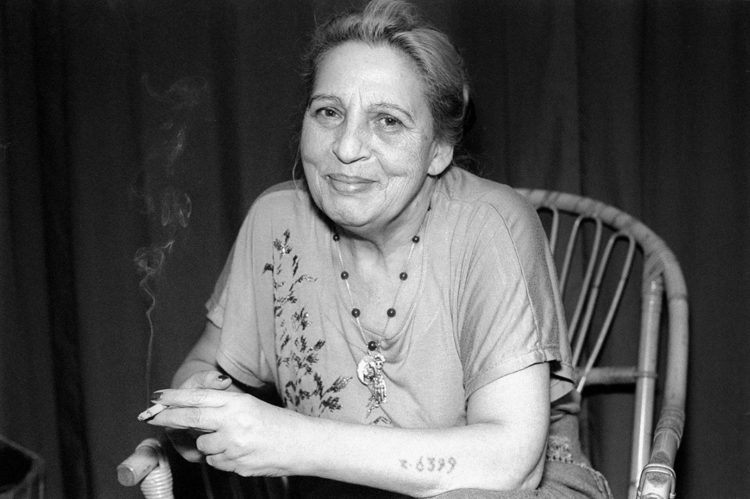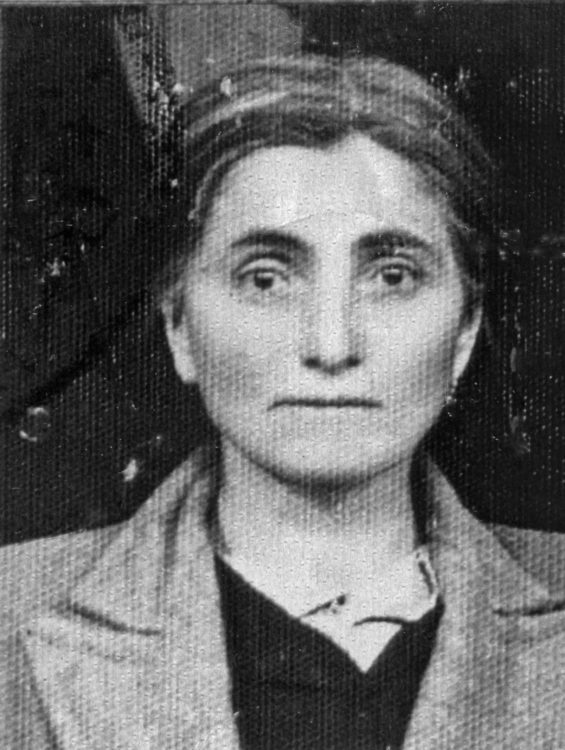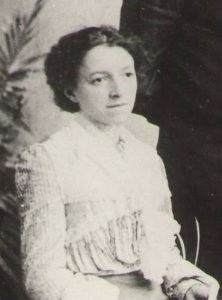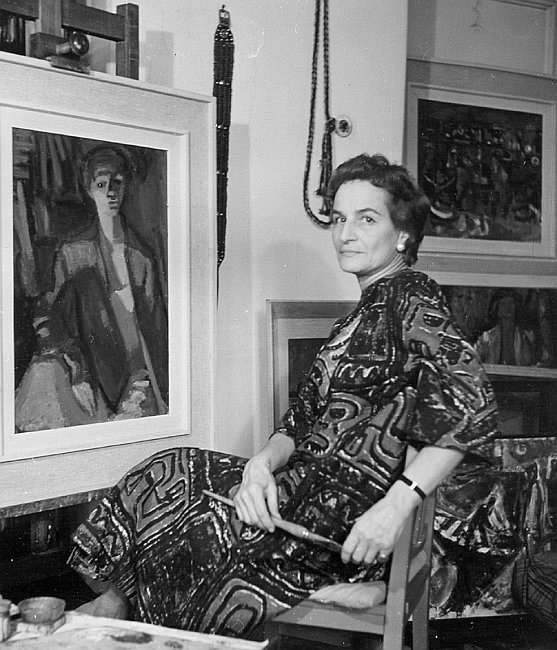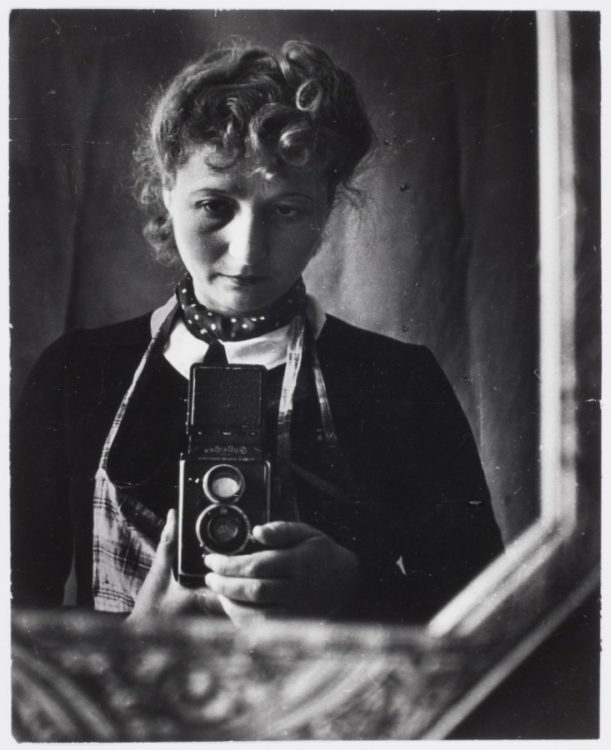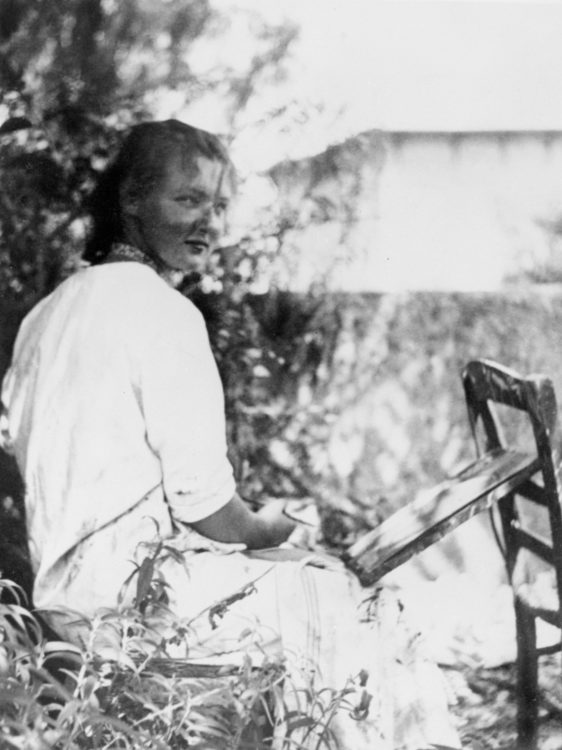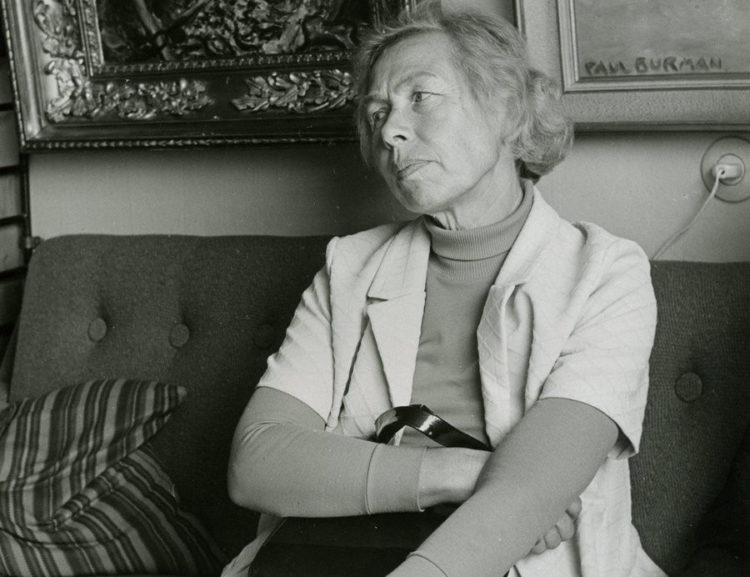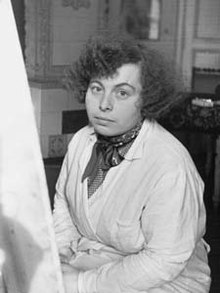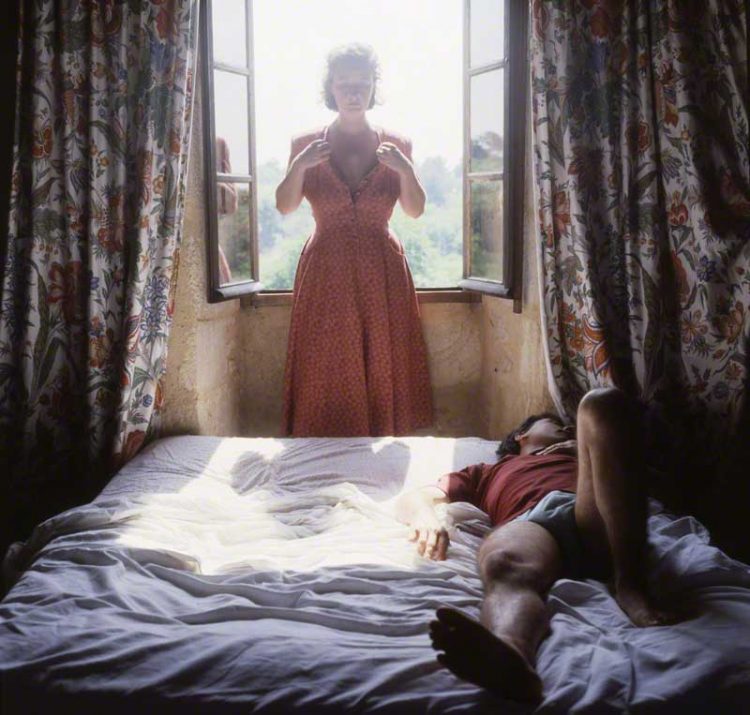Review
Ceija Stojka, Sans titre, sans date, acrylic on board, Courtesy Hojda & Nuna Stojka © Ceija Stojka, © ADAGP, 2017
From now until 20 May 2018, La Maison rouge will present, for the first time in Paris, the little-known work of Ceija Stojka (1933-2013), an artist of Roma origins and a survivor of the genocide of the Gypsies under the Nazi regime.
When Antoine de Galbert discovered her existence in 2013, he was overwhelmed by her extraordinary creations and decided to delay the closure of his institution to pay tribute to her.
It was in 1988 at the age of 55, that C. Stojka, then a carpet seller in Austria, decided to express her experience of deportation1 through writing, painting, and drawing. However, among Gypsies, silence is golden and sharing intimate details about the horrors of war is strictly taboo. Yet she has now broken this silence, more than forty years after the horror she experienced, thanks to an encounter2 with Karin Berger, an Austrian director and documentary filmmaker, to whom she had shown her first writings – all in phonetics – scribbled onto a notebook. Thus began for her a second life, one which would make her into a national treasure.
Self-taught and almost illiterate, she then embarked on a captivating work of remembrance and became one of the first female Roma survivors of the camps to bear witness. For twenty years, she painted every day, tirelessly, in her Vienna apartment, producing over a thousand artworks each endowed with an unfiltered emotional power, one which finds comparisons today in art brut and naïve art.
This exhibition, jointly organised with the theatre company Lanicolacheur and its director, Xavier Marchand, has brought together around 150 paintings and drawings created between 1988 and 2012.

Ceija Stojka, Sans titre, 1995, acrylic on paper, 69.5 x 99 cm, Courtesy collection Antoine de Galbert, Paris, © Ceija Stojka, © ADAGP, 2017

Ceija Stojka, Sans titre, sans date, acrylic on board, Courtesy Galerie Kai Dikhas, © Ceija Stojka, © ADAGP, 2017
As an introduction, the exhibition starts with a vital text that explains the European roots of the Roma and reminds us in passing of the social prejudice that the gypsy community had to face before their genocidal persecution by the Nazis.
The entire visit revolves around two axes, with, on the one hand, the “light works” (helle Bilder) and, on the other, the “dark works” (dunkle Bilder), as defined by Stojka. The first brings together both pre-war memories – colourful and idyllic landscapes featuring the Austrian countryside where the Stojka family lived free and happy in their caravan – and the post-war scenes, which predominantly comprise fields of flowers in which the human figure is quasi-absent but in which hope and peace appear to be reflected. In these paintings and drawings, C. Stojka gives free rein to her taste for colour and often uses explosive tones; she expresses with great tenderness the singularity of Roma life. In the very heart of the exhibition, the so-called “dark” works plunge the visitor into Stojka’s nightmarish visions of her experiences in the camps. Each memory – whether real or symbolic – laid onto canvas, card, or paper – sometimes directly with the fingers – is haunted by recurring motifs – barbed wire, chimney stacks, crows, eyes, swastikas, or railway tracks – which compellingly convey the horrifying atmosphere of the camps.

Ceija Stojka, Sans titre, 1993, acrylic on board, Courtesy Hojda et Nuna Stojka, © Ceija Stojka, © ADAGP, 2017
The exhibition ends with the screening of the documentary Unter den Brettern hellgrünes Gras [Under the Planks the Grass Is Greener], directed by K. Berger3. Although we leave feeling shaken, after having seen and heard Stojka tell the unspeakable tale of her four months spent in Bergen-Belsen, above all, we measure the importance of her testimony, knowing that she had never told it to anyone before, not even to her own children.
Once again, we can acknowledge the initiative of La Maison rouge, which is showcasing a completely unknown artist in France, whose intimate yet universal work will long remain in our memories.
Ceija Stojka, une artiste rom dans le siècle, from 23 February to 20 May 2018, at La Maison rouge (Paris, France).
Born in Austria, she was deported at the age of 10, with her mother and a large part of her family, during a Nazi raid in the spring of 1943. She was to survive three concentration camps: Auschwitz-Birkenau, Ravensbrück, and Bergen-Belsen.
2
From this encounter the book Wir leben im Verborgenen [We Live Hidden] (Vienna: Picpus, 1988) was to emerge: the first story of her experience in the camps.
3
Vienna, Navigator Film, Johannes Rosenberger, 2005, 52 min. She also directed a first documentary entitled Ceija Stojka. Das Porträt einer Romni [Ceija Stojka. Portrait d’une Romni], Vienna, Navigator Film, Johannes Rosenberger, 1999, 85 min.
Mathilde Bartier, "In Search of Ceija Stojka, Roma Artist and Survivor of the Camps." In Archives of Women Artists, Research and Exhibitions magazine, . URL : https://awarewomenartists.com/en/magazine/in-search-of-ceija-stojka-roma-artist-and-survivor-of-the-camps/. Accessed 2 July 2025
